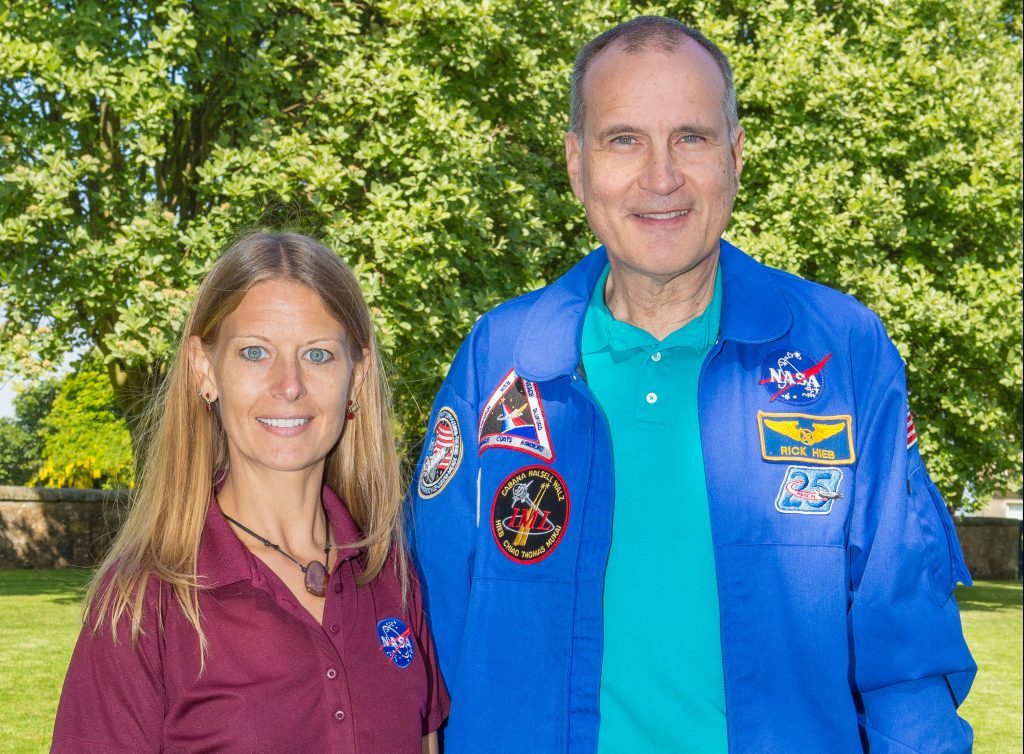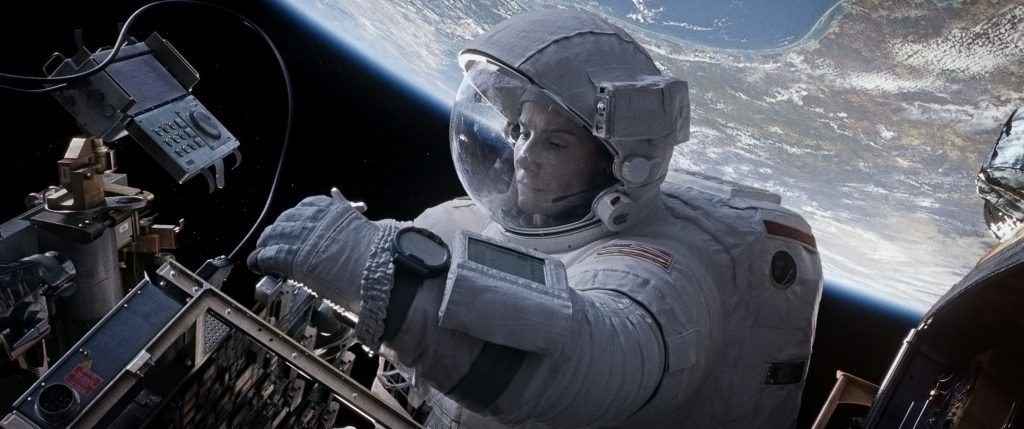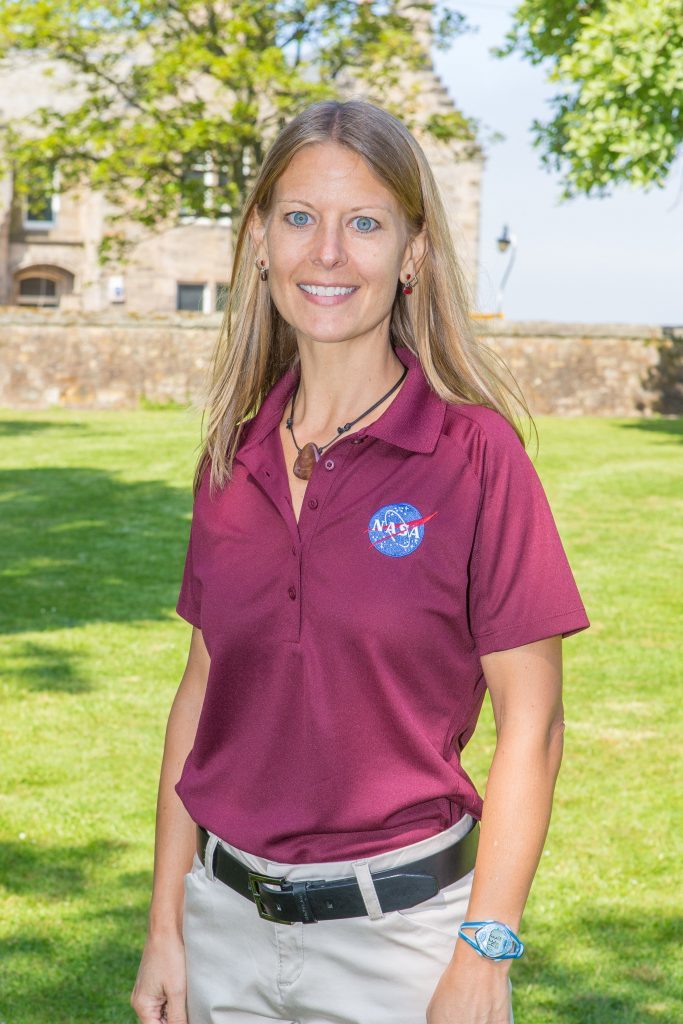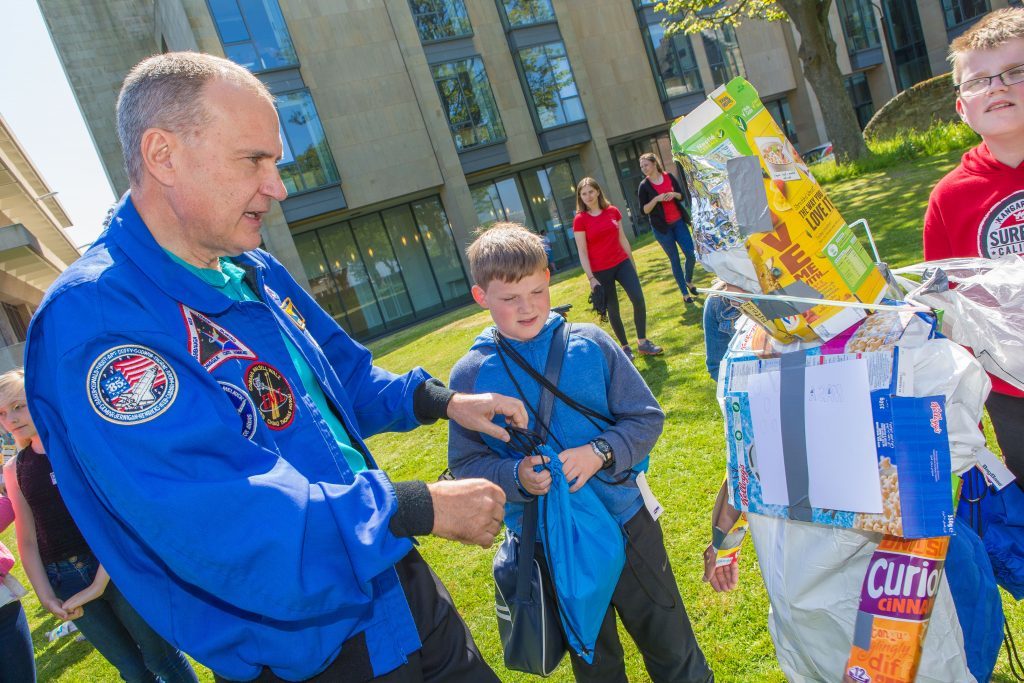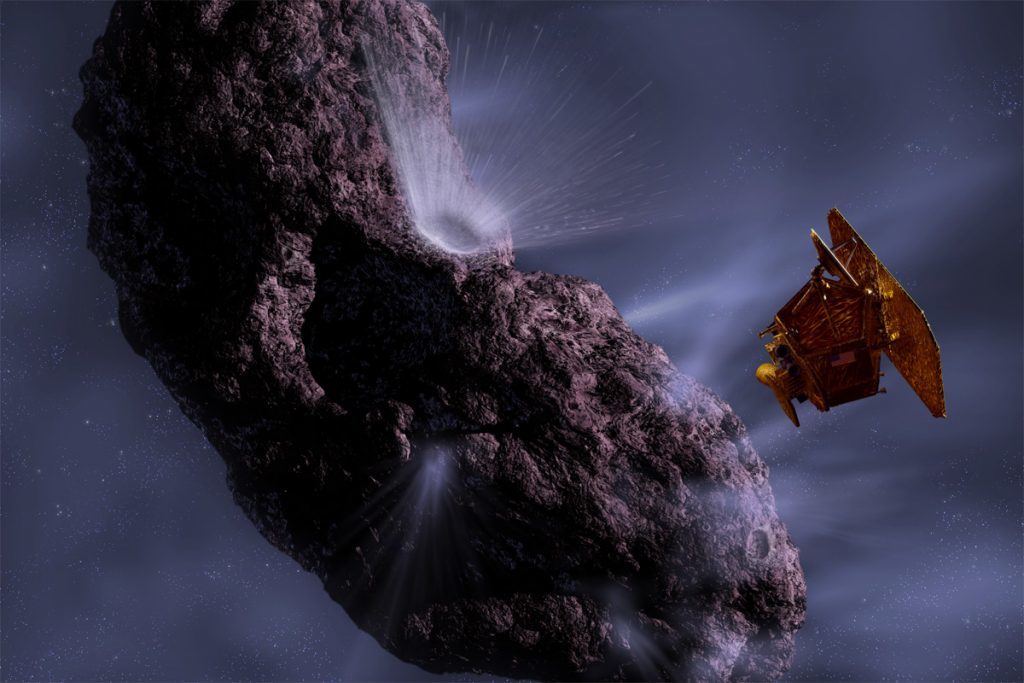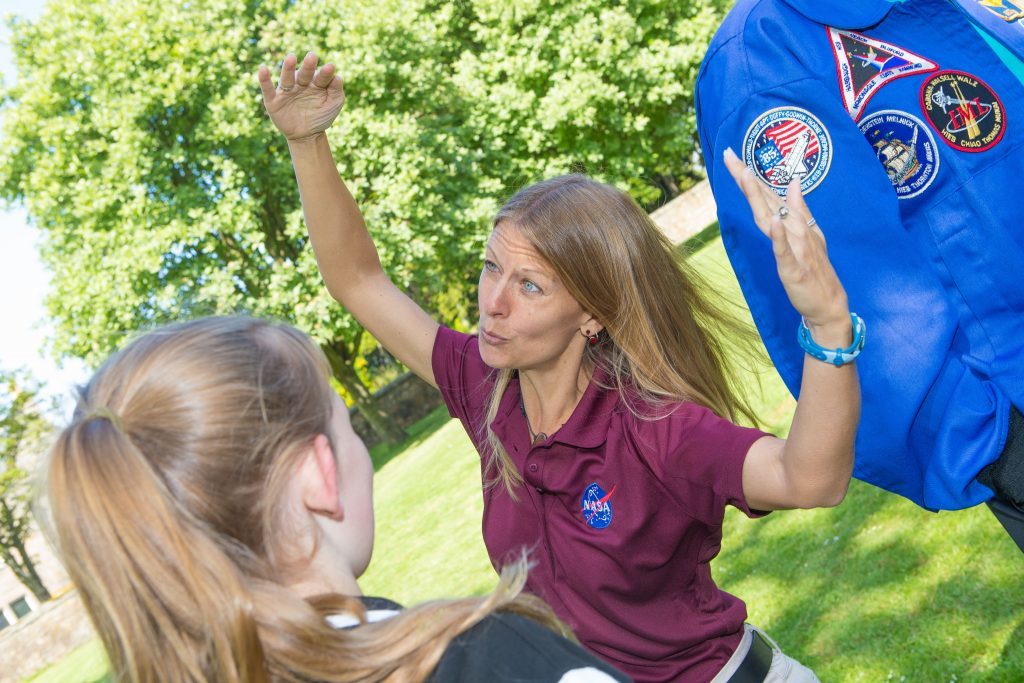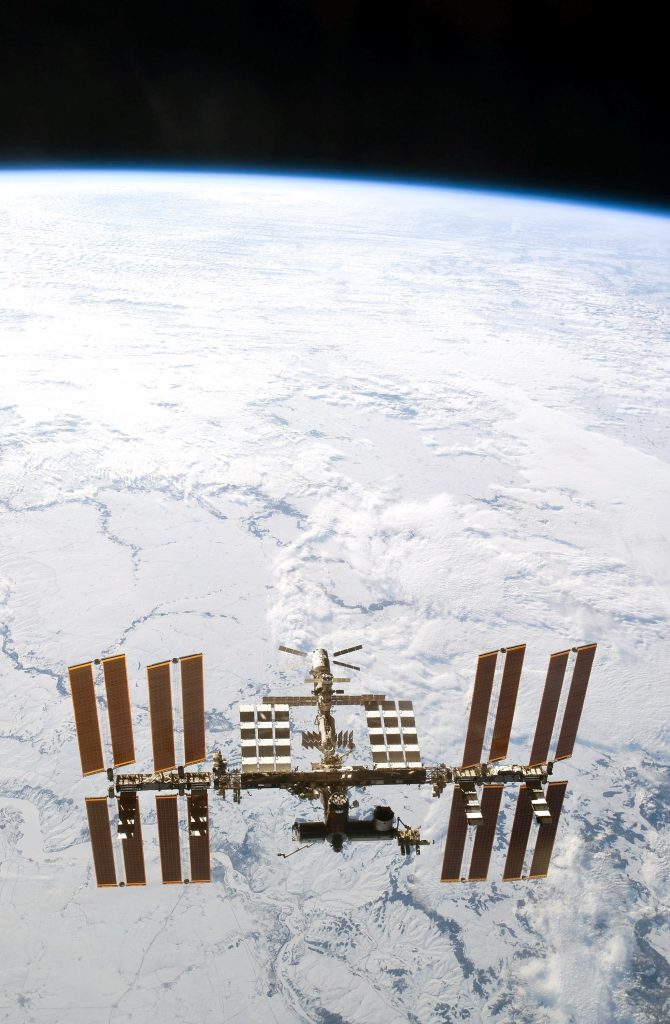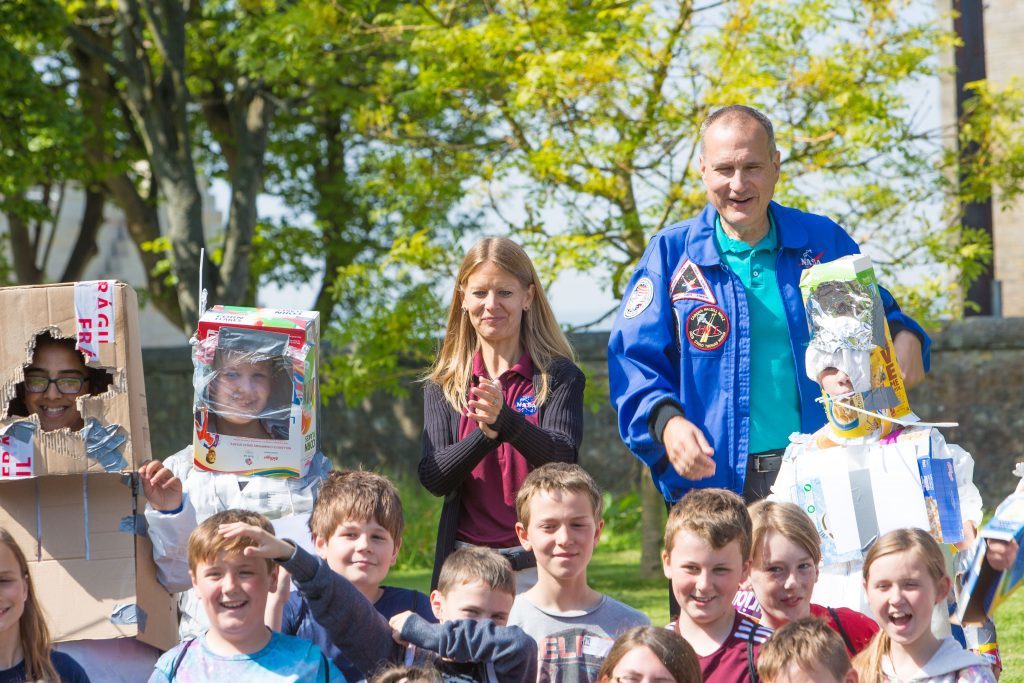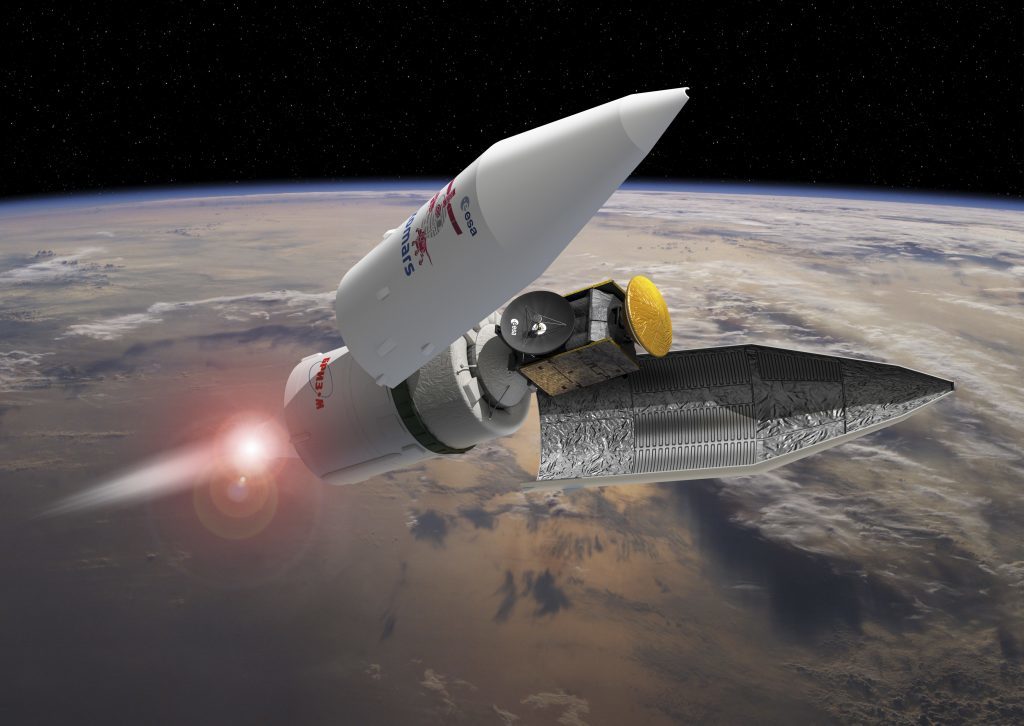How realistic was the Hollywood blockbuster Gravity? Ahead of a St Andrews University lecture, Michael Alexander meets a former NASA astronaut and a space scientist who will be speaking about the increasing risk of being hit by debris in space for real.
It was an enthralling beautifully shot blockbuster of a movie which followed the exploits of two astronauts on a mission for survival after the destruction of their space shuttle in a catastrophic debris collision.
When Alfonso Cuarón’s 3-D space thriller Gravity was released at cinemas in November 2013, it was widely praised for its realistic portrayal of life in space.
But how do real NASA scientists view the accuracy of the film that starred George Clooney and Sandra Bullock?
The realism of the movie will be explored by former NASA space shuttle astronaut Rick Hieb and NASA orbital debris program scientist Dr Sue Lederer when they give a public lecture on Thursday June 9 at St Andrews University.
The Americans have been in Fife this week working with local children on a Space School programme.
And in an interview with The Courier at St Andrews University, the scientists revealed that whilst many parts of the film such as the depiction of the Hubble Space Telescope are well done, other aspects such as orbital mechanics – how things move in space – just do not stand up to scientific scrutiny.
Dr Lederer, 45,who specialises in tracking orbiting debris from exploded spacecraft, said: “There are pieces in the movie that are much more grandiose because the film makers wanted to make it exciting. There are pieces in the movie that are actually worse in reality in space than they are shown in the movie. So we are going to talk about what the reality is, what’s true and what’s false, and we’ll also talk about what it’s like to go on a spacewalk .Rick has been on a spacewalk so he has all the background.
“We’ll talk about what’s accurate about instrumentation and the space station, and then a little bit about the physics.”
Mr Hieb, 60, who spent over 750 hours in space during three space shuttle missions in the 1990s, added: “It’s a fun movie. I know they have to make it more dramatic to entertain audiences. But the net result is that people do not have a clue about what’s really right or wrong. That’s the frustrating part to me.
“On the other hand another film, The Martian – and we have never even been to Mars – is pretty good. It’s a well done story about what might happen and how you might deal with the problems.”
As a planetary scientist, Dr Lederer was involved in the Japanese spacecraft mission Hayabusa which imaged and sampled the surface of asteroid Itokawa.
She was also part of an international team of scientists who studied Comet Tempel 1 – the target of the Deep Impact Spacecraft mission, which successfully impacted the surface. She recently helped discover three Earth-sized planets around a very small red star called TRAPPIST-1. One or more of those planets just might be suitable for life to form.
Her main role, however, is helping track orbital debris around the Earth, like pieces of spacecraft that have exploded or collided with other objects in space.
There are millions of man-made debris orbiting the earth ranging in size from spent rockets to micron-sized pieces of dust. But Dr Lederer revealed the US Department of Defence is only tracking around 22,000 because most are too small to detect.
And the real issue is the speed at which these objects are travelling.
She said: “Imagine the size of a bullet. A sniper rifle shoots at around one kilometre per second. At the level where the International Space Station is orbiting (400 km) objects move on average 10 km per second. So even if it’s something as tiny as a grain of sand, imagine a grain of sand hitting you at the speed 10 times faster than a sniper rifle.”
Dr Lederer explained that anything that’s collided with something else, shed off or exploded in Earth orbit will create a whole field of debris and a self-sustaining cascading event known as Kessler Syndrome, which can produce at least 200,000 pieces of debris from one single impact.
And the risk to orbiting spacecraft or satellites was very real with several satellites knocked out in recent years.
She added: “It’s a serious enough risk that anywhere between one to 10 times the year the ISS will manoeuvre and do a slightly different orbit to avoid being hit by space debris.
“And there are situations where the astronauts go into the Soyuz capsule in a safe zone so that if the space station does get hit and the atmosphere gets released into space, they are immediately ready to come home. This would usually be because there’s a particular piece of debris that they could intercept.”
Mr Hieb said that during shuttle missions it was part of morning routine to inspect the triple layer reinforced windows for tiny yet visible impact craters, usually caused by high velocity specks of dust or paint. Damage was found on most missions and this would be photographed and scrutinised for repair back at home.
“In a space suit when you are outside,” he added, “you are just kind of counting on the big sky theory, because there’s a lot of room up there. But when objects are going so fast, if you get hit by something it’s a really bad day. Something the size of a marble could go through a crew member like it didn’t even notice you were there.
“The good news is that space is always cleaning itself. If you stopped launching everything, you’d clean up orbit as everything would eventually fall to earth.”
Dr Lederer said it was entirely possible that space flight from Earth could eventually be impeded by the amount of orbiting space debris. That was why NASA was pushing to create a policy so that after 25 years spacecraft either have to be de-orbited back to a low Earth orbit or moved into a wider ‘graveyard’ orbit so that they don’t become a target or a source of debris in the future.”
• The public lecture – An Evening with NASA – The Truth Behind Gravity, is on Thursday June 9 from 7pm to 8.30pm at the Buchanan Lecture Theatre, Union Street, St Andrews. Entry is free but attendees should pre-register by emailing schools.access@st-andrews.ac.uk
malexander@thecourier.co.uk
